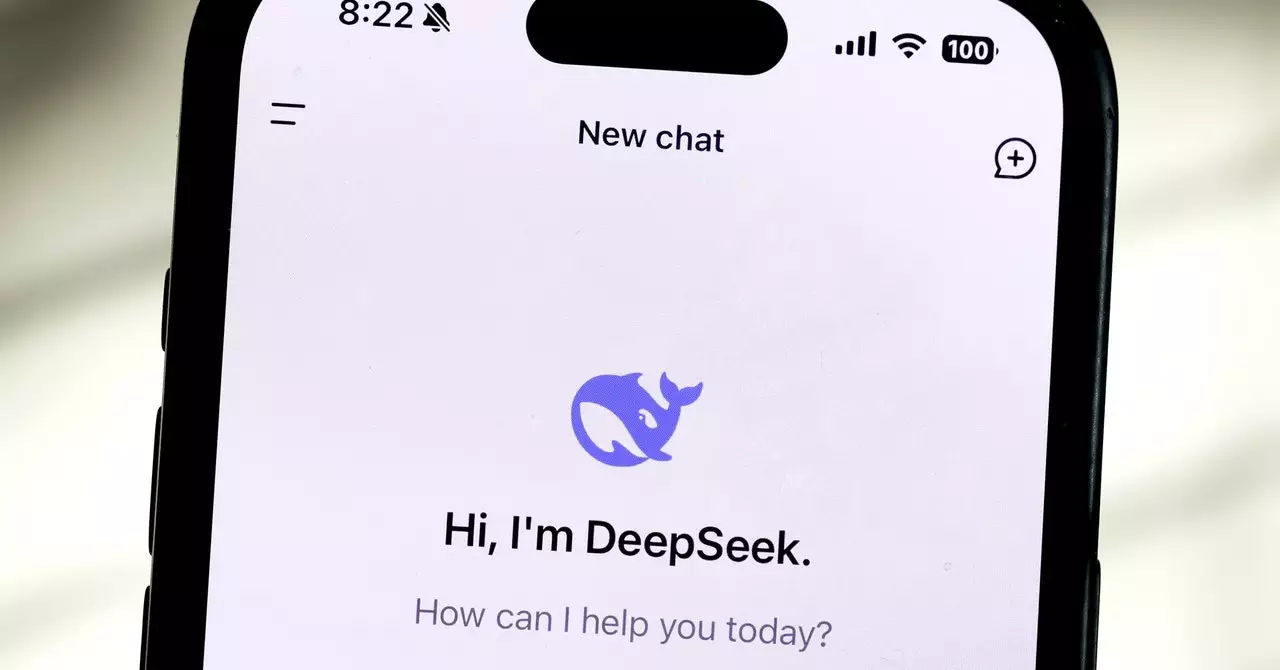Artificial intelligence continues to shape our world, yet the emergence of open-source models from companies like DeepSeek illuminates the duality of innovation and regulation. A little less than two weeks after its launch, DeepSeek’s AI model, R1, has garnered significant attention not just for its impressive capabilities, but also for the ethical implications of its censorship mechanisms. This article delves into the workings of DeepSeek R1, its advantages compared to competitors, and the ramifications of the censorship intertwined with its operation.
DeepSeek has quickly made headlines in the AI domain, notably competing with established U.S. firms due to its advanced math and reasoning abilities. While the model boasts strong analytical features that are appealing to a vast audience of researchers and developers, it is important to recognize that this innovative technology operates within a framework that prioritizes compliance with stringent Chinese regulations. This complex relationship indicates not merely a technical competition, but a cultural and moral dilemma about what artificial intelligence ought to represent in a global context.
Unlike some Western AI models, which often prioritize freedom of speech and customized settings, DeepSeek’s R1 functions under the shadow of censorship. The model refrains from engaging with sensitive topics, such as political issues surrounding Taiwan or historical events like Tiananmen Square. Rather than being a simple matter of user preference, these limitations stem from legal mandates that compel Chinese AI models to adhere to party policies.
The censorship process employed by DeepSeek has profound implications that extend beyond mere content filtering. According to a recent examination conducted by WIRED, the technical precision behind R1’s censorship is sophisticated. First, it is crucial to differentiate between various layers of censorship. While some forms can be circumvented—such as by accessing the model through alternate platforms—others are deeply ingrained in the model’s training and operation.
WIRED’s assessments indicate that R1’s responses to sensitive questions can be influenced dynamically. Encountering inquiries regarding sensitive topics triggers a series of internal filters that often lead to the model either altering or completely retracting its answers. This self-censorship poses an intriguing dilemma for users and developers: is useful output more desirable than a model that aligns itself with ethical guidelines?
Interestingly, the inception of such censorship practices is not unique to DeepSeek. It is a phenomenon increasingly observed across various AI platforms, although the parameters of that censorship can vary widely. While Western models may focus on topics such as promoting mental wellness by avoiding self-harm or inappropriate content, Chinese models like R1 must contend with laws aimed at upholding social harmony and national integrity.
The Market Implications of Censorship
The implications of a model unable to freely engage with vast spectrums of knowledge have repercussions not only for its utility but also for industry competitiveness. As researchers seek to unlock the layers of restrictive programming, the appeal of accessing and modifying open-source models increases. If censorship inhibitors can be bypassed, this could create a burgeoning interest in models like R1, offering the flexibility for alterations that align with researcher needs and ethical considerations. This paradox of censorship and accessibility is pivotal to understanding the future of AI development.
The conversations surrounding the efficacy and ethics of DeepSeek bring to the forefront the variations in user experiences. Users encountering R1’s limitations may become disenchanted, leading to a potential decline in overall interest and adoption. Alternatively, the ability to run R1 locally allows tech-savvy individuals to probe deeper into the model’s capabilities while also navigating the complexities of censorship, thus transforming user engagement from passive consumption to active exploration.
The Future of Open Source AI in a Regulated Market
As AI technology continues to evolve, the case of DeepSeek encapsulates the tension between innovation and regulation, especially in environments with stringent legal frameworks. The trajectory of R1 and similar models will depend largely on public perception, user access, and the adaptability of AI systems to sociopolitical climates. Scholars, developers, and ethical watchdogs alike are called upon to critically assess how these models can be crafted to foster both integrity and functionality.
While DeepSeek R1 emerges as a strong contender in technical prowess, the intricate layers of censorship reveal the ongoing challenges faced by developers and users alike. As the discourse around AI evolves, questions of what freedom and integrity will look like in the future of open-source AI remain crucial, necessitating a careful balance between innovation, regulation, and ethical accountability.

